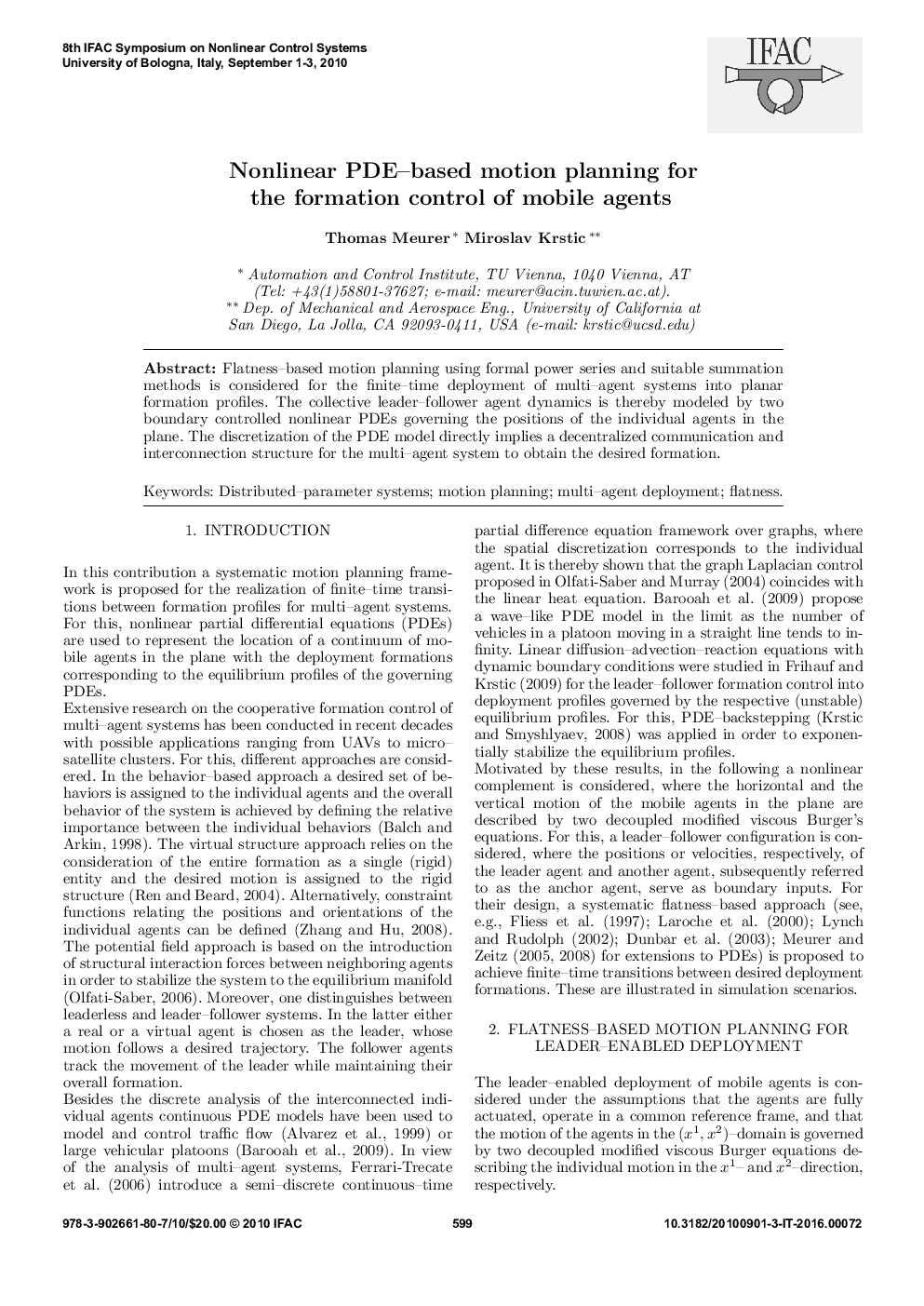| Article ID | Journal | Published Year | Pages | File Type |
|---|---|---|---|---|
| 717976 | IFAC Proceedings Volumes | 2010 | 6 Pages |
Abstract
Flatness–based motion planning using formal power series and suitable summation methods is considered for the finite–time deployment of multi–agent systems into planar formation profiles. The collective leader–follower agent dynamics is thereby modeled by two boundary controlled nonlinear PDEs governing the positions of the individual agents in the plane. The discretization of the PDE model directly implies a decentralized communication and interconnection structure for the multi-agent system to obtain the desired formation.
Related Topics
Physical Sciences and Engineering
Engineering
Computational Mechanics
